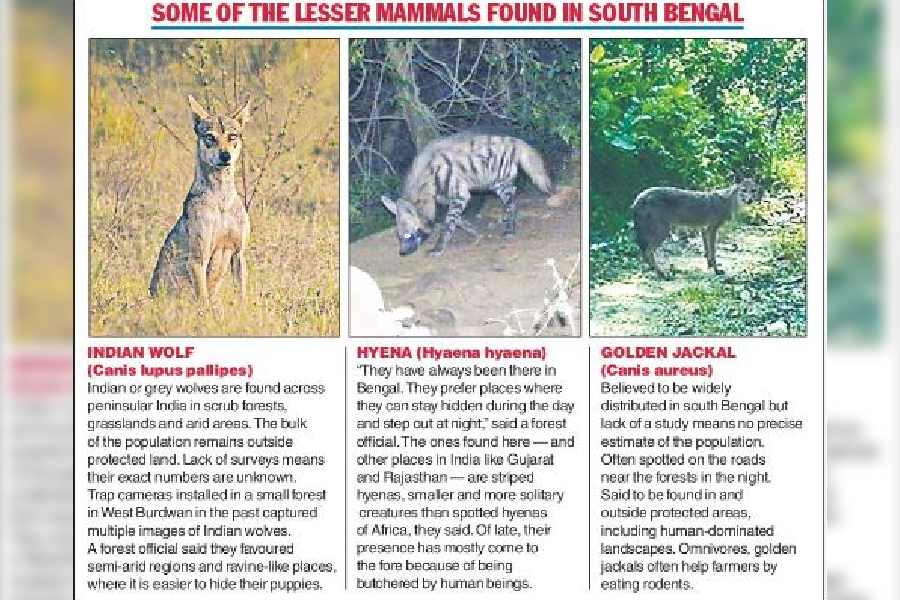A group of forest guards walked a combined distance of more than 1,000km in the forests of Bankura in three days earlier this month, looking for any signs of “lesser mammals”.
The trail looked for scat, pugmarks or any other sign that indicated the presence of the animals, including hyena, Indian wolf, Golden jackal, Bengal fox, Indian hare and Indian pangolin.

Based on the initial findings, camera traps are being installed at strategic locations for images.
The exercise is the second attempt at estimating the population, abundance and distribution of lesser mammals in south Bengal, said forest officials.
“In forest parlance, lesser mammals refer to animals that are lesser known than tigers, elephants or rhinos,” said a forest official.
These animals are believed to be living in the forests of south Bengal for a long time, but their population was largely undocumented and the extent of distribution largely anecdotal till a couple of years ago.
A first study — by the Zoological Survey of India, commissioned by the forest department — that attempted to estimate their population, habitat and distribution had its report tabled in 2021.
Now, the state forest department has started its own study to have a more precise understanding of the lesser mammals.
“The ZSI study was... done through modelling exercise and sample placement of camera traps,” said Debal Ray, chief wildlife warden of Bengal.
“After the previous report, we decided to go for habitat improvement across south Bengal. For that, we need an absolute idea. The new exercise will be an exhaustive study to have that absolute idea. What has started in Bankura will be replicated across the forests in south Bengal,” he said.
A precise understanding of the lesser mammals’ habitat and distribution will be of great help in conservation and conflict-mitigation efforts, said forest officials.
On September 10, 11 and 12, forest staff covered a combined distance of 1,182km on foot for the survey. The initial findings have been “very encouraging,” an official said.
“Based on the findings of the survey, we are installing the cameras,” said Umar Imam, divisional forest officer of the Bankura North forest division.
“In total, 280 cameras will be put up at strategic locations. The installation should be complete in a couple of more days,” Imam said on Tuesday. The cameras will be in place for a month.
Three NGOs — WWF India, Nature Mates and SHER — are collaborating with the forest department in the project. A primary report is expected by the end of this year.
